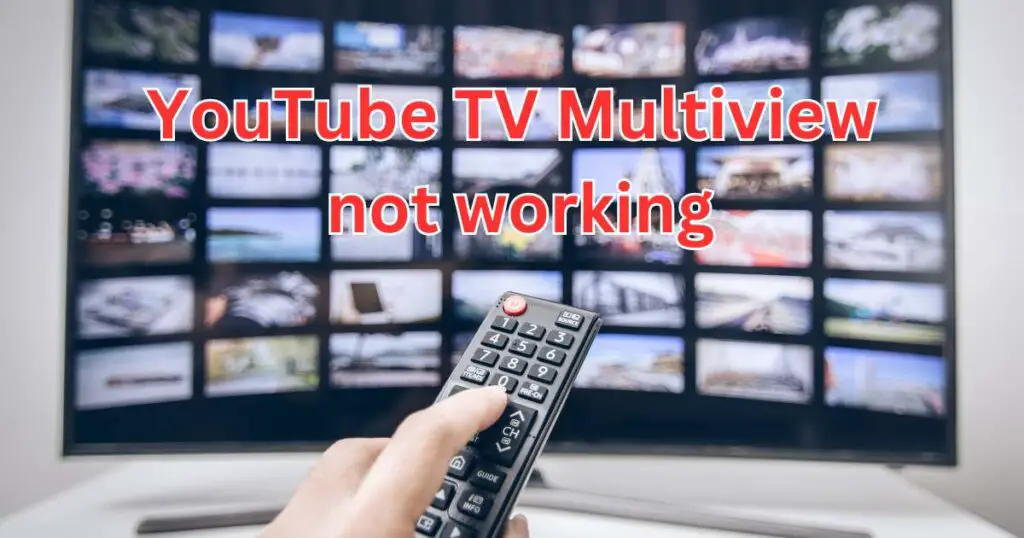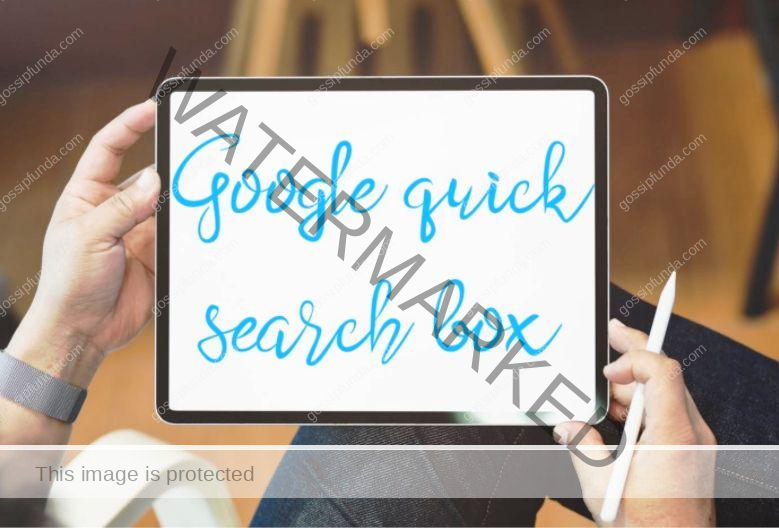Imagine gearing up for a relaxing weekend, ready to binge-watch your favorite shows on YouTube TV, only to find that the Multiview feature isn’t cooperating. Frustrating, right? Don’t sweat it! In this comprehensive guide, we’ll delve into the common reasons behind YouTube TV’s multiview glitches and provide you with up-to-date, step-by-step solutions to get you back to uninterrupted streaming in no time. So, grab your favorite beverage, sit back, and let’s tackle this together.

What is YouTube TV and Its Multiview Feature
YouTube TV is a cutting-edge streaming service that offers live TV channels, on-demand content, and cloud DVR capabilities without the hefty price tag of traditional cable or satellite services. Accessible on a variety of devices—from smartphones and tablets to smart TVs and gaming consoles—YouTube TV provides flexibility and convenience for modern viewers.
The multiview feature is a standout tool within YouTube TV, allowing users to watch multiple channels or programs simultaneously on a single screen. Whether you’re trying to keep up with a thrilling sports event while catching up on the latest news or enjoying multiple shows with family members, multiview enhances your viewing experience by offering unparalleled flexibility.
Why Is My YouTube TV Multiview Not Working?
Encountering issues with the multiview feature can be a major buzzkill, especially when you’re all set for a marathon viewing session. Let’s explore the most common reasons why YouTube TV’s multiview might be acting up:
1. Outdated App Version
Using an older version of the YouTube TV app can lead to compatibility issues, causing features like multiview to malfunction. Regular updates not only bring new features but also fix existing bugs that might be hindering your experience.
2. Slow or Unstable Internet Connection
YouTube TV relies heavily on a stable internet connection. If your internet speed is inconsistent or too slow, multiview may struggle to stream multiple channels smoothly, leading to buffering or complete feature failure.
3. Device Incompatibility
Not all devices support YouTube TV’s multiview feature. Using an incompatible device can result in errors or limited functionality. It’s essential to ensure your device meets the necessary requirements for optimal performance.
4. Technical Glitches Within the App
Sometimes, the app itself may encounter bugs or glitches that disrupt the multiview feature. These issues can stem from corrupted data or conflicts with other applications running on your device.
5. Location Restrictions
YouTube TV is not available everywhere, and attempting to use multiview from an unsupported location can lead to functionality issues. Additionally, certain channels may have regional restrictions that affect multiview capabilities.
6. Account Problems
Issues with your YouTube TV subscription, such as expired payments or account verification problems, can prevent features like multiview from working correctly. Ensuring your account is in good standing is crucial for seamless streaming.
7. Device Settings Conflicts
Incorrect device settings, such as display resolution or power-saving modes, can interfere with YouTube TV’s ability to utilize multiview effectively. Tweaking these settings can often resolve related issues.
8. Server Issues
Sometimes, the problem isn’t on your end. YouTube TV servers may experience downtime or maintenance, temporarily disrupting multiview functionality. Checking YouTube TV’s official channels for service status can help determine if this is the case.
How to Fix YouTube TV Multiview Not Working
Don’t let multiview issues ruin your streaming experience. Follow these proven solutions to get YouTube TV’s multiview feature back on track:
1. Update the YouTube TV App
Ensuring your YouTube TV app is up-to-date is the first step in resolving multiview issues. Updates often include bug fixes and performance improvements that can restore functionality.
Steps to Update the YouTube TV App:
- Open the Google Play Store or Apple App Store on your device.
- Search for YouTube TV.
- If an update is available, tap the Update button.
- Once updated, launch YouTube TV and check if multiview is functioning properly.
If updating doesn’t resolve the issue, consider uninstalling and reinstalling the app to eliminate any corrupted data that might be causing problems.
2. Improve Your Internet Connection
A stable and fast internet connection is vital for streaming multiple channels simultaneously. Here’s how to ensure your connection is up to par:
- Check Your Internet Speed: Use tools like Speedtest to verify your current speed. YouTube TV recommends the following speeds for optimal streaming:
- 3 Mbps for standard-definition (SD) content
- 6 Mbps for high-definition (HD) content
- 13 Mbps for 4K Ultra HD content
- 8 Mbps for live television streaming
- Restart Your Router: Sometimes, a simple router reboot can resolve connectivity issues. Turn off your router, unplug it for about 30 seconds, then plug it back in and wait for all the lights to stabilize.
- Use a Wired Connection: If possible, connect your streaming device directly to the router using an Ethernet cable. Wired connections are typically more stable and faster than Wi-Fi.
- Optimize Wi-Fi Placement: Ensure your router is placed in a central location, away from walls and electronic interference. Avoid placing it near microwaves or cordless phones, which can disrupt the signal.
- Limit Bandwidth Usage: Reduce the number of devices using your network simultaneously. Pause downloads, limit background applications, and ensure no other high-bandwidth activities are running while streaming.
Implementing these steps can significantly enhance your streaming quality, ensuring a smoother multiview experience.
3. Verify Device Compatibility
Not all devices support YouTube TV’s multiview feature. To ensure your device is compatible, follow these steps:
- Check Official Compatibility: Visit YouTube TV’s official to verify if your device is listed.
- Update Device Firmware: Ensure your device’s firmware is up-to-date. Manufacturers often release updates that enhance performance and compatibility with streaming services.
- Try a Different Device: If your current device isn’t compatible, try accessing YouTube TV’s multiview feature on another device that is supported, such as a smart TV, gaming console, or streaming stick.
Ensuring device compatibility is crucial for leveraging all the features YouTube TV has to offer, including multiview.
4. Clear App Cache and Data
Over time, the YouTube TV app may accumulate corrupted cache or data files, leading to functionality issues. Clearing these can often resolve multiview problems.
Steps to Clear Cache and Data:
- On Android Devices:
- Open the Settings app.
- Navigate to Apps or Application Manager.
- Select YouTube TV.
- Tap on Storage & Cache.
- Click Clear Cache and then Clear Data.
- Restart the YouTube TV app and check multiview functionality.
- On iOS Devices:
- Since iOS doesn’t allow clearing cache directly, you need to uninstall and reinstall the app.
- Press and hold the YouTube TV app icon until it jiggles.
- Tap the Delete App option.
- Reinstall the app from the App Store.
- Open the app and test the multiview feature.
- On Smart TVs:
- Access your TV’s Settings.
- Navigate to the Apps section.
- Select YouTube TV and choose Clear Cache or Clear Data.
- Restart the app and verify if multiview is working.
Clearing cache and data can eliminate any corrupted files that might be disrupting the app’s performance, restoring smooth functionality.
5. Adjust Device Settings
Your device’s settings can sometimes interfere with streaming applications. Here’s how to tweak them for optimal performance:
- Disable Battery Saver Mode: Battery saver or power-saving modes can limit app performance. Turn off these modes to ensure YouTube TV runs smoothly.
- Adjust Display Settings: Ensure your display resolution is set to a level supported by multiview. High resolutions can sometimes strain the app, so adjusting them might help.
- Close Background Applications: Running multiple apps simultaneously can drain resources. Close unnecessary apps to free up memory for YouTube TV.
- Enable Hardware Acceleration: On some devices, enabling hardware acceleration can improve streaming performance. Check your device’s settings to enable this feature if available.
Optimizing device settings ensures that YouTube TV has the necessary resources to function without hitches, enhancing your multiview experience.
6. Use a VPN Service Wisely
If you’re trying to access YouTube TV from a region where it’s not officially available, using a VPN can sometimes help. However, it’s important to use reputable VPN services to avoid further complications.
Considerations When Using a VPN:
- Choose a Reliable VPN: Opt for VPNs known for their speed and reliability, such as NordVPN or ExpressVPN.
- Connect to the Correct Server: Ensure you’re connected to a server located in a region where YouTube TV is available.
- Avoid Free VPNs: Free VPN services often have limited bandwidth and can compromise your data security.
- Understand the Risks: Using a VPN might violate YouTube TV’s terms of service, potentially leading to account suspension.
While a VPN can help bypass regional restrictions, it’s essential to weigh the benefits against the potential risks. Use this method as a last resort and proceed with caution.
7. Resolve Account Issues
Account-related problems can hinder access to YouTube TV’s features, including multiview. Here’s how to ensure your account is in good shape:
- Verify Subscription Status: Log in to your YouTube TV account and ensure your subscription is active. Renew it if necessary.
- Check Payment Information: Ensure your payment details are up-to-date and that there are no pending payment issues.
- Review Account Settings: Navigate to your account settings to verify that all information is correct and that there are no restrictions placed on your account.
- Contact Support: If you’ve verified all the above and still face issues, reach out to YouTube TV’s customer support for personalized assistance.
Maintaining a healthy account ensures uninterrupted access to all YouTube TV features, including the coveted multiview.
8. Wait for Server Maintenance to Complete
At times, YouTube TV undergoes server maintenance or experiences outages, which can temporarily disable features like multiview. Here’s what you can do:
- Check Official Channels: Visit YouTube TV’s [official Twitter account](https://twitter.com/YouTubeTV) or [status page](https://status.youtube.tv/) for real-time updates on service status.
- Wait Patiently: If there’s an ongoing maintenance or outage, the best course of action is to wait until the service is restored.
- Retry Later: Once maintenance is complete, attempt to use the multiview feature again to see if the issue is resolved.
Patience is key during these times, as forcing solutions won’t expedite the process.
Additional Tips to Enhance Your YouTube TV Experience
Beyond fixing multiview issues, here are some extra tips to elevate your overall YouTube TV experience:
- Customize Your DVR Settings: Maximize your cloud DVR by adjusting recording preferences and organizing your recorded content for easy access.
- Explore Add-Ons: Enhance your subscription with available add-ons like premium networks, sports packages, or international channels to tailor YouTube TV to your preferences.
- Optimize Streaming Quality: Adjust streaming quality settings based on your internet speed to prevent buffering and ensure smooth playback.
- Use Parental Controls: Manage what content is accessible on your account by setting up parental controls, ensuring a safe viewing environment for all family members.
Implementing these enhancements can make your YouTube TV experience more personalized and enjoyable.
Conclusion
Encountering issues with YouTube TV’s multiview feature can be frustrating, but with the right troubleshooting steps, you can swiftly overcome these hurdles. From updating the app and ensuring a stable internet connection to verifying device compatibility and resolving account issues, each solution plays a crucial role in restoring seamless streaming. Remember to stay patient during server maintenance periods and leverage additional tips to enhance your overall viewing experience.
By following this guide, you’re well-equipped to tackle any multiview challenges and continue enjoying the vast array of content that YouTube TV offers. Whether you’re a sports enthusiast, a movie buff, or someone who loves juggling multiple shows, multiview is designed to elevate your streaming experience. So, don’t let technical glitches dampen your entertainment—take control with these proven solutions and get back to what you love most.
FAQs
YouTube TV offers a subscription-based service starting at $64.99 per month. This includes access to over 85 live TV channels, cloud DVR with unlimited storage, and the ability to stream on up to three devices simultaneously.
Yes, YouTube TV allows streaming on up to three devices simultaneously with a single account. This means you can enjoy your favorite shows and channels on different devices without any interruptions.
YouTube TV offers a robust lineup of over 85 live TV channels, including major networks like ABC, CBS, FOX, NBC, ESPN, TNT, and USA. Additionally, premium channels such as HBO, Showtime, and Starz are available as add-ons for an extra fee.
Rishu Kumar is a B.Tech graduate in Computer Science with a passion for technology and its applications. He has a keen interest in software development and has been actively involved in various coding projects since his college days. Rishu’s strong technical skills, coupled with his ability to think critically and solve complex problems, have helped him excel in his field.
During his academic years, Rishu developed expertise in programming languages such as Java, Python, and C++. He also gained hands-on experience in web development, database management, and data structures and algorithms. Rishu’s curiosity and willingness to learn have driven him to stay up-to-date with the latest advancements in the tech industry.


